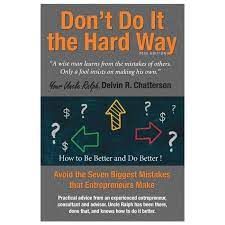
By Anita Bruinsma, CFA
Special to the Financial Independence Hub
Picking stocks is really hard.
If you’re a DIY [Do It Yourself] investor, buying individuals stocks is risky. Even if you own 15 or 20 stocks, which will give you some measure of diversification, you have to choose the good ones. Which stocks do you choose from the 1,500 available on the Toronto Stock Exchange and the 2,400 on the New York Stock Exchange?
There are so many factors that influence how a stock performs and the average investor doesn’t have the time, skills, or inclination to consider all of them, or even most of them.
Casual stock pickers appear to focus on the current trend or outlook for the company’s product. For example, electric cars (Tesla), at-home workouts (Peloton), and e-commerce (Amazon).
It might feel “easy” to pick a stock based on this trend factor. You can see that electric cars are getting more attention and are part of the solution to the climate crisis. When Beyond Meat was gaining new restaurant customers like McDonald’s with its Beyond Burger, excitement and optimism was high. Seems like an easy decision: go with a company that has momentum.
The temptation to buy stocks on this premise is understandable. You can make a lot of money over a very short period of time. Easy riding. But often these stories die out and reality sets in. It could be that the cost of making the product is too high, demand for the product slows, or the company over-extends itself and runs into cash-flow problems. When optimism meets reality, stocks plunge.
After becoming a public company, Beyond Meat rose 400%. It subsequently crashed from US$234 a share to about $25 today. It’s down 83% over the past year alone. Similarly, Peloton rose by 550% during the pandemic due to the frenzy around at-home workouts, but has fallen 90% since its peak at sits at about $11 a share. Reality set in.
Professional stock analysts and money managers with long-term perspectives look beyond this surface-level excitement. It’s important that demand is there, but there are a myriad of other factors to go deeper on.
In my 15 years picking stocks for a large Canadian bank, I learned an incredible amount about equity research. Here are just a few of the things that professional analysts consider:
Demand: The demand for the company’s product is one of the first things to look at since revenue is the lifeblood of any business. Whether the product is women’s clothing, running shoes, fast food, oil, electricity, or credit cards, you need to have a view on what future demand will be. Although you can develop a theory, nobody actually knows what will happen, making this seemingly simple metric unknowable.
Profit margins: How does the company’s profit margin compare to peers in a similar business? Are margins expanding or contracting? What are the main drivers of profit margin and are there risks to those drivers? For example, how would a 10% rise in fuel prices impact the margins of Air Canada? How do currency fluctuations change the profits of importers like Dollarama?
Balance sheet: There is a lot of crucial information to be gleaned from a balance sheet such as inventory levels, cash in the bank, and how much is invested in hard assets like factories. Most importantly, the balance sheet shows you how much debt a company has and how it has changed over time. High levels of debt have taken down many companies.
Track record: Investing in a company with a track record reduces your risk significantly. Looking at revenue growth over a period of 5 or 10 years will tell you how sustainable the company’s product sales are. Analyzing the change in profit margins tells you whether the company has a scalable business and whether the management team is properly managing its costs. Newer companies lack this information and looking at only two or three years’ worth of data does not give you enough information.
Qualitative information: Companies that trade on the stock market are required to publish certain documents like the Annual Report and Annual Information Form. These documents have a ton of information about how the company operates, the risks it faces, and how it reports its earnings. These documents can reveal risks that you might not be comfortable with. For example, you might learn its main manufacturing facility is in an unstable country, or that it gets one of its main inputs from just one supplier.
Taking all of these factors into consideration (and allowing for a plethora of wildcard factors), an analyst will come to a conclusion about the quality of the company. If they like the outlook, it goes on the “maybe” list. But that’s not the end of it: the analyst then needs to decide how much the stock is worth. This is the realm of valuation, and valuation is a combination of math, art, and clairvoyance.
And finally, there’s all the stuff we don’t know. Despite regulatory requirements to disclose all “material information,” there are a lot of things going on within a company that we will never hear about. When talking with investors and the public, the management team’s objective is to pump up its story to get more people to invest – always apply this lense when you hear a CEO or CFO talking.
Let me share my experience with two companies that demonstrates the importance of doing proper research before buying. This is a story of two companies that made their sales numbers look great using fraudulent tactics: Valeant Pharmaceuticals and Luckin Coffee. In one case, I did extensive research and analysis and decided I didn’t believe the numbers, and in the other, I didn’t do the required work and chose to believe the story. Continue Reading…






